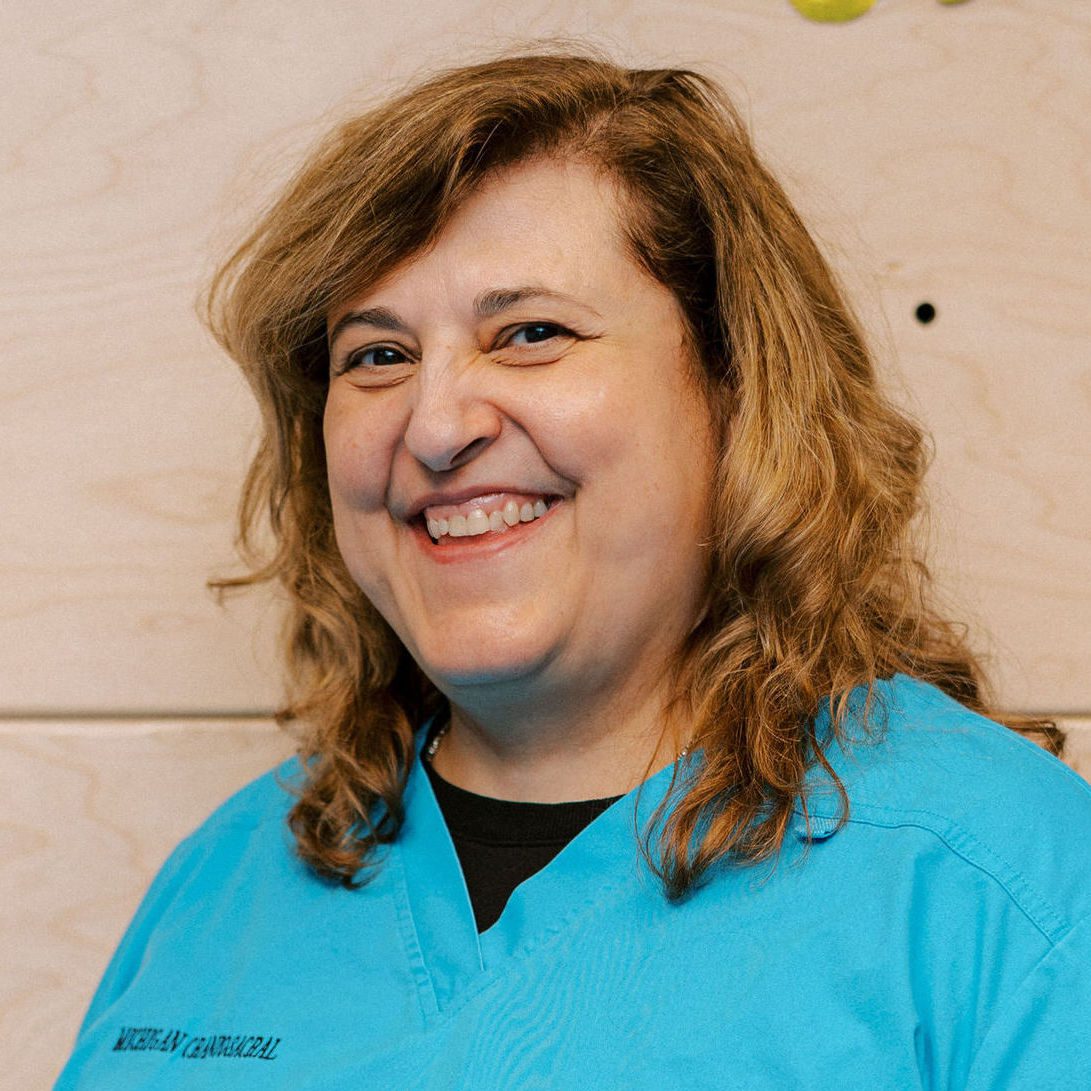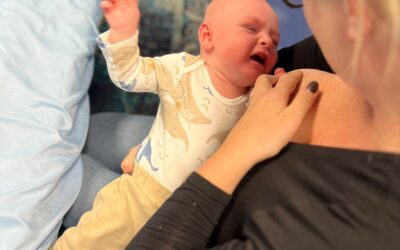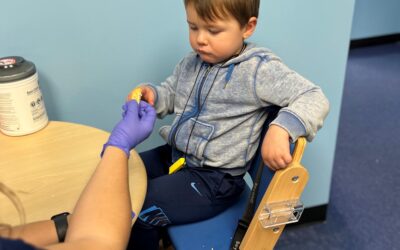By Magda Girao, OTRL, CST-D, NDT, Michigan Pediatric Therapy, and Kirsten Sonneville-Douglass, IBCLC, Live Latch Love
At Michigan Pediatric Therapy, we work hand-in-hand with lactation consultants. It is our commitment to work as a team to provide the best service for each child. We know that the best approach is for both disciplines to work together and collaborate as a lactation consultant (IBCLC) and an occupational therapist (OT).
You might be asking, “What is an IBCLC?” An International Board Certified Lactation Consultant (IBCLC) is the highest level credential for healthcare professionals who specialize in the clinical management of lactation and is considered the goal standard for chest/breastfeeding support and care. A lactation consultant’s role is to support the dyad, both mother and baby, to meet their goals. An IBCLC is qualified to help at any point in the breastfeeding journey, beginning in pregnancy through early breastfeeding, returning to work, the introduction of solids, and weaning. They work to help determine the underlying problem and develop a plan to support the family in reaching their breastfeeding goals.
While chest/breastfeeding is “natural,” it’s not always easy. Often, a mother will reach out because of a painful latch or the mother has nipple trauma. During a consult, a simple adjustment in positioning may solve the issue.

How the synergy develops…
But at times, an IBCLC may identify that there’s an oral weakness or restriction that may hinder a baby from latching properly and transferring milk effectively. This is where the collaboration comes in. An IBCLC will refer to other community resources, like an OT. The IBCLC focuses on functionality, whereas an OT focuses on the mechanics of the mouth, jaw, cheeks, lip, and tongue that are needed for successful breastfeeding. While the baby is in therapy, the LC is there to continue to support, making sure the mother’s milk supply is protected and assuring that the baby is effectively and efficiently transferring milk. Families appreciate knowing that their care team is working together to support them in reaching their chest/breastfeeding goals.
The mechanics of occupational therapy helps the baby move forward with their mechanics. We look at all the working parts that are listed below and address the whole child. By assessing the whole child, OTs use their expertise to help the baby achieve success where they may be lacking.

Occupational therapy begins with assessing:
1. Neuromuscular and Musculoskeletal Issues:
We address the whole body
Joint stability: Can the child maintain the jaw or does it shift to one side?
Joint mobility: Can the child move the jaw up and down?
Muscle strength: Can the child express milk?
Muscle tone: Is the child unable to open their mouth or is the mouth hanging open?
Muscle endurance: Does the child have the ability to feed over time, 10-15minutes?
Motor reflexes: Help the child gain and learn new skills
Fascia: Is movement restricted in the jaw, neck, arms, legs, or eyes (craniosacral)?
Developmental milestones: On tummy, back, sitting, crawling
2. Motor:
PositionBody positions: Feeding positions for all ages
Obtaining and holding objects: Toys, bottles
Reaching and grasping
Use of hands, manipulates
3. Oral Motor:
Oral motor function: Jaw, lips, tongue, and cheek exercises for higher functioning
Tethered tissues: How it affects orofacial structure development; how it affects feeding
Oral motor skills: Suckling, sucking, biting, chewing, swallowing; gross to fine; jaw movement
Management of feeding, eating, and swallowing
Sustained feeding over lifespan
4. Sensory:
Visual: Child can’t find breast on their own
Hearing: Child can only eat if quiet
Taste: Child over-responds to taste of formula
Smell: Child reacts to all smells with crying
Proprioception: Child can only sleep if on the parent
Touch: Does not like to be held
Interception: Child’s ability to recognize and communicate
Pain: Overreacts with crying
Sensitivity to temperature: Does not like cold milk in bottles
Vestibular: Needs to be moving all the time
Regulation: Promotes secure attachment
5. Play:
Activities that are intrinsically motivated; does the child engage with toys?

How can we help?
By working together in this synergy, the lactation consultant and occupational therapist impact areas that will make the child and parent progress rapidly towards success. This synergy also promotes success in feeding for the future. Our goal as two professionals who at times are very different and at times may overlap, is to achieve a path forward that provides the child and parent success in latching, living, and loving on their journey as a family. It is our privilege to offer a village of cooperation and teamwork for your journey.

Magda Girao, OTRL, CST-D, NDT, Founder
Magda has more than 20 years of experience as a licensed occupational therapist. Magda has a Diplomate (advanced) certification in craniosacral therapy through the Upledger Institute. She is certified in neurodevelopmental techniques, is an expert in the treatment of children with breastfeeding and other feeding issues, and is certified in therapeutic listening. Magda has extensive training in feeding issues and is trained in tethered oral tissues, SOS Approach, Beckman Protocol, Talk Tools, Nomas, mealtime misery, and AFRID.



